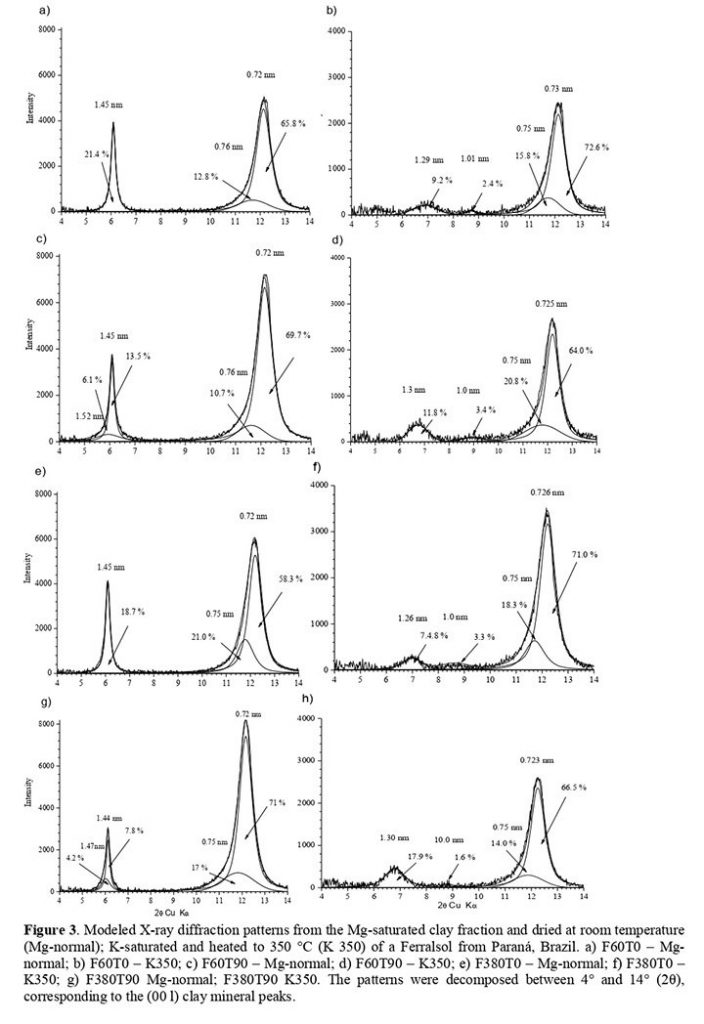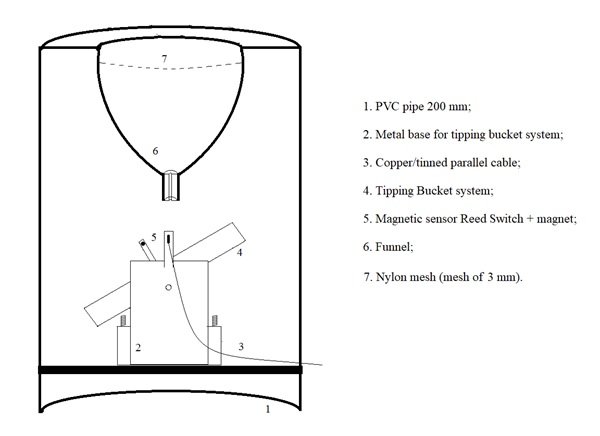Does Ferralsol Clay Mineralogy Maintain Potassium Long-Term Supply to Plants?
10/Apr/2019
ABSTRACT Ferralsols ( Latossolos ) should contain few or no 2:1 clay minerals and have low potassium (K) contents, and consequently low levels of non-exchangeable K forms are expected. The aim of this study was to evaluate how the clay mineralogy of a Ferralsol affects the soil K dynamics in response to K fertilization during cropping and whether the clay mineralogy was altered due to successive crops and K fertilization. A tropical Brazilian Ferralsol under field conditions was sampled (0.00-0.20 […]
Timing and Splitting of Nitrogen Side-Dress Fertilization of Early Corn Hybrids for High Grain Yield
08/Mar/2019
ABSTRACT Currently, most nitrogen fertilizer is side-dressed when corn is in the four (V4) to eight (V8) expanded leaf stage. However, recent studies have shown that modern hybrids take up high amounts of nitrogen during grain filling. This indicates that a late nitrogen fertilization, at the time of crop flowering, may be important to optimize corn agronomic performance. This study aimed to evaluate the effect of the timing and splitting of nitrogen side-dress application on the agronomic performance of early […]
Physical, Chemical, and Microbiological Properties of Soil under Different Plant Covers in the Seridó Desertification Region in the Brazilian Semiarid
08/Mar/2019
ABSTRACT The Seridó Desertification Region is a result of inadequate management of the native Caatinga vegetation, which generated degraded areas with little or no capacity for plant production. The area has experienced a succession of different land uses, but little is known about the impact of these changes. The present study tested the hypothesis that the intense degradation of the Caatinga drastically decreased vegetal biomass production, which favored direct soil exposure and resulted in a lower abundance and diversity of […]
Crop Yield Responses to Sulfur Fertilization in Brazilian No-Till Soils: a Systematic Review
06/Feb/2019
ABSTRACT Sulfur (S) fertilization recommendations for grain crops in Brazil were formerly established from studies on crops with a low yield potential grown on soils under conventional tillage (CT). However, the subsequent adoption of no-tillage (NT) altered S dynamics in the soil, making it necessary to carefully evaluate the applicability of these S fertilizer recommendations. In addition, the emergence of modern high-yield-potential genotypes, the successive application of concentrated low-sulfur fertilizers, and reduction in S atmospheric deposition have raised the likelihood […]
Potassium Fertilization of Eucalyptus in an Entisol in Low-Elevation Cerrado
06/Feb/2019
ABSTRACT Potassium (K) is one of the most highly accumulating nutrients in Eucalyptus and, consequently, is heavily exported by the harvesting of wood. Moreover, its availability in the soil in most Brazilian plantation areas is very low, especially in the regions of the Cerrado biome, which has soils with low natural fertility and marked water deficits, implying a lack of nutrient supply and, consequently, a less efficient water use. Our objective was to evaluate the effects of K fertilization on […]
Sugarcane Root Development and Yield under Different Soil Tillage Practices
06/Feb/2019
ABSTRACT New strategies for sugarcane production have been very important since the incorporation of ethanol in the Brazilian energy mix in the early 1970s. Prior to planting sugarcane, the soil is prepared, and this process can affect root development and, consequently, sugarcane production. This study was conducted in an area of sugarcane crop renewal in the Cerrado biome (Brazilian tropical savanna), with the objective of identifying which tillage system generates the better root development and improved yield in sugarcane. The […]
Phosphorus Fractions in Soil with Organic and Mineral Fertilization in Integrated Crop-Livestock System
06/Feb/2019
ABSTRACT Use of organic fertilizers in integrated crop-livestock (iCL) systems may affect soil phosphorus fractions. This study aimed to determine phosphorus fractions in the soil under the iCL system after six years of application of organic or mineral fertilizers. The experiment was conducted on a Rhodic Kandiudox (Nitossolo Vermelho Distroférrico) in a randomized block design, using a 5 × 3 + 1 factorial scheme, with four replicates. The treatments consisted of three organic fertilizers (poultry litter, pig slurry, and compost) […]
Tipping Bucket Prototype for Automatic Quantification of Surface Runoff Rate in Plots
07/Jan/2019
ABSTRACT: Quantification of runoff rate is an onerous task with non-automated devices; it requires a lot of manual labor to perform measurements. In this study, an automatic device to quantify the surface runoff rate from plots with a small area was developed and tested. The prototype was based on the tipping bucket technique and built with reused materials. Its performance was tested in the laboratory and a calibration curve was developed to improve measurement accuracy. The device can be used […]
Rhizobial Inoculation and Molybdenum Fertilization in Peanut Crops Grown in a No Tillage System After 20 Years of Pasture
07/Jan/2019
ABSTRACT: Peanut (Arachis hypogea) is an important legume grain consumed by humans and utilized for effective nutrient cycling in a diverse cropping system. Areas that have been cultivated with perennial pasture for decades may have nutritional deficiencies and lack a sufficient population of atmospheric nitrogen-fixing bacteria. Molybdenum is an essential micronutrient that is part of the enzyme nitrogenase contained within symbiotic Bradyrhizobium bacteria, which are responsible for fixing nitrogen in legumes. Our objective was to evaluate the effects of application […]
Spatial and Temporal Potential Groundwater Recharge: the Case of the Doce River Basin, Brazil
07/Jan/2019
ABSTRACT: Little is known about the groundwater recharge potential of weathered tropical catchments, where increasing water uptake is widespread to meet various water demands. This study aimed to estimate the volume of groundwater recharge of the Doce River Basin, Minas Gerais, Brazil. The BALSEQ model was applied to calculate the water balance over a period of two years (2007-2009). Evapotranspiration, runoff, and potential groundwater recharge (PGR) were calculated, using daily data on rainfall, potential evapotranspiration, and plant-available water. A soil […]


